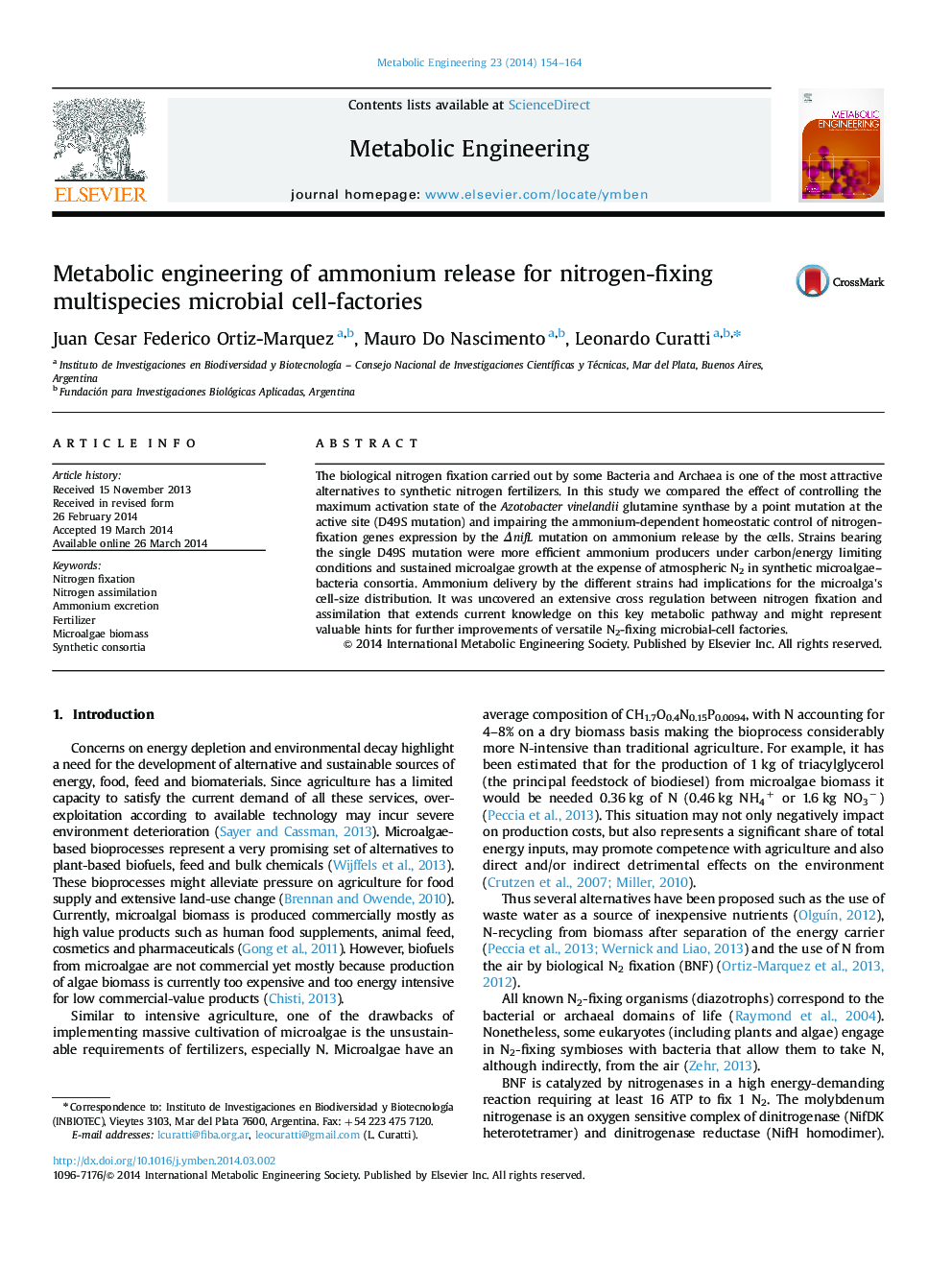| Article ID | Journal | Published Year | Pages | File Type |
|---|---|---|---|---|
| 31546 | Metabolic Engineering | 2014 | 11 Pages |
•Nitrogen fixation and assimilation were genetically modified in Azotobacter sp.•Each mutant strain presented a distinctive pattern of ammonium release.•GS-deficient strains release ammonium even under C-limiting conditions.•Microalgae–Azotobacter sp. artificial consortia produce biomass from CO2 and N2.•Inoculation with mutant bacteria altered the microalgae cell-size distribution.
The biological nitrogen fixation carried out by some Bacteria and Archaea is one of the most attractive alternatives to synthetic nitrogen fertilizers. In this study we compared the effect of controlling the maximum activation state of the Azotobacter vinelandii glutamine synthase by a point mutation at the active site (D49S mutation) and impairing the ammonium-dependent homeostatic control of nitrogen-fixation genes expression by the ΔnifL mutation on ammonium release by the cells. Strains bearing the single D49S mutation were more efficient ammonium producers under carbon/energy limiting conditions and sustained microalgae growth at the expense of atmospheric N2 in synthetic microalgae–bacteria consortia. Ammonium delivery by the different strains had implications for the microalga׳s cell-size distribution. It was uncovered an extensive cross regulation between nitrogen fixation and assimilation that extends current knowledge on this key metabolic pathway and might represent valuable hints for further improvements of versatile N2-fixing microbial-cell factories.
